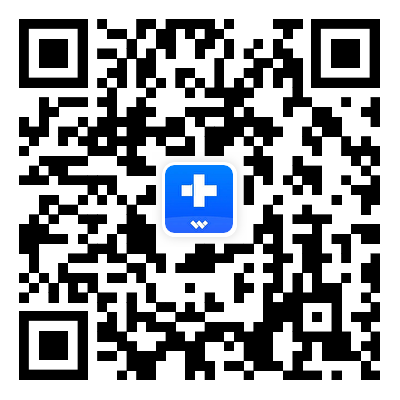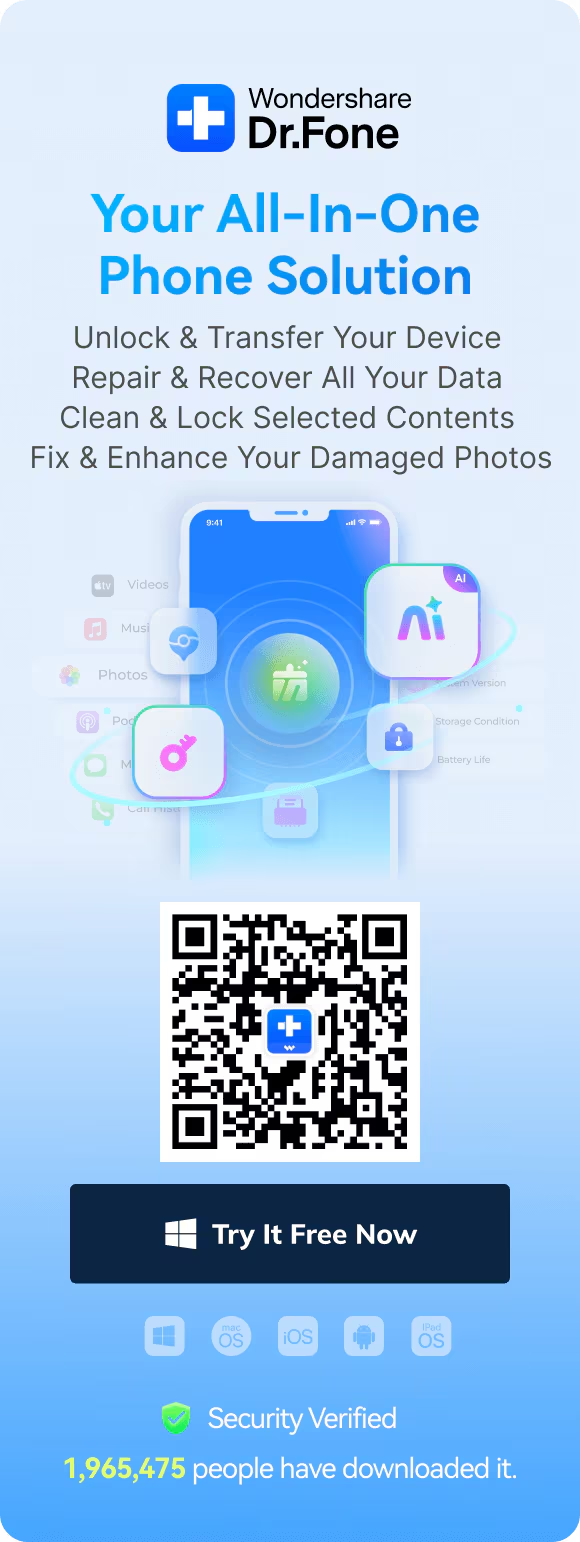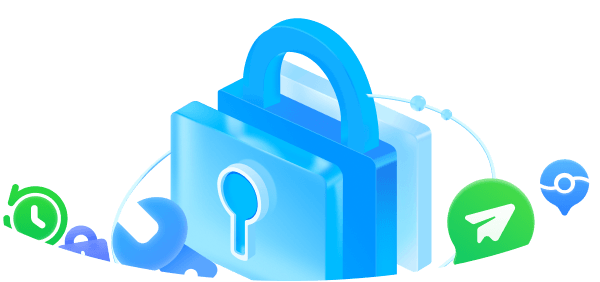Transferring data when switching devices is essential to ensure all your important files, contacts, and apps are preserved. Whether you're upgrading your Android phone or switching to an iPhone, keeping your data intact makes the transition smoother.
With the right steps, you can quickly move everything you need, avoiding the hassle of manually restoring files or starting from scratch. Ensuring all data is transferred allows you to continue using your new device without missing a beat.
Wireless transfers like Dr.Fone App - Phone to Phone Transfer offer a particularly convenient way to move data from one phone to another. They eliminate the need for additional hardware or lengthy processes, making it easy to complete the transfer with minimal effort. Continue reading below to learn more.
In this article
Part 1: Understanding Phone-to-Phone Transfer
Transferring data between phones is a crucial process that ensures you maintain access to your important information during device upgrades or switches. This can include anything from contacts and messages to photos and apps.
Common Scenarios Where Transfers Are Needed
In various situations, transferring data is essential to ensure continuity and ease during device changes. Here are some common scenarios where you might need to transfer data:
- Upgrading to a new Android or iPhone device
- Replacing a damaged or malfunctioning phone
- Switching phones after losing a device
- Consolidating data between two phones
- Transitioning from Android to iPhone for the first time
- Migrating data to a secondary device for work or personal use

While transferring data between two Android devices is often more straightforward due to the same operating system, switching from Android to iPhone introduces some differences. Android devices typically allow a direct and easy transfer of apps and settings, whereas transferring to an iPhone requires more specific steps to accommodate the iOS system.
Preparing for Data Transfer
Preparing for a data transfer is crucial to ensure a smooth and efficient process. Taking the time to set everything up beforehand can help avoid potential issues and make the transition as seamless as possible.
- Backup Your Data. Before beginning the transfer process, it’s essential to back up your data. This ensures that all files, contacts, and apps are safely stored in case anything goes wrong during the transfer.
- Ensure Both Devices Are Charged. Data transfers can sometimes take a while, especially with large amounts of data, so keeping your phones charged ensures the process can be completed without any issues.
- Connect to a Stable Wi-Fi Network. For wireless transfers, a stable Wi-Fi connection is necessary to avoid data loss or interruptions. Ensure both devices are connected to a reliable network before starting the transfer.
Part 2. Transferring Data Using Dr.Fone Phone to Phone Transfer
Dr.Fone App - Phone to Phone Transfer is a powerful tool designed to facilitate seamless data transfers between different mobile platforms, including cross-platform transfers from Android to iPhone and between Android devices. This software simplifies the often complex process of moving data, allowing users to transfer various types of content.
Dr.Fone App (iOS) & Dr.Fone App (Android)
Your One-Stop Expert for Screen Unlock, Smart Clean, Data Recovery, and Phone Management of Mobile Devices!
- Effortlessly unlock various locks on your device.
- Instantly free up storage space by smart clean.
- Rapidly recover different kinds of lost phone data and information.
- Easily manage cluttered and private device content.
- Supports both iOS and Android devices.
Step-by-Step Guide to Using Dr.Fone Phone to Phone Transfer
Before you begin transferring your data, it’s important to familiarize yourself with the steps involved in using Dr.Fone Phone to Phone Transfer. This will help ensure a smooth and successful transfer process.
Step1Initiate the Transfer
Start by opening Dr.Fone on your computer and selecting the “Phone to Phone” transfer card from the main interface. You’ll then need to confirm the sender's device to ensure that the correct phone is being used for the transfer.

Step2Select Data Types
Choose the types of data you wish to transfer. For example, if you want to transfer videos, click on the ""Videos"" tab within the Dr.Fone interface. From there, select the desired files you want to move, and then click the ""Send" " button to prepare for the transfer.

Step3Connect Devices
The sender's device will generate a QR code. The recipient device should select "Receive" on the Dr.Fone app and then scan the QR code displayed on the sender's device to establish a secure connection between the two phones.

Step4Complete the Transfer
Once the devices are connected, the data transfer will commence automatically. You can monitor the progress on both devices through the interface. After the transfer is completed, a confirmation message will appear, indicating that the data transfer was successful and that all selected files have been moved to the new device.

Part 3: Transferring Data (Android to Android & Android to iPhone)
Transferring data between devices can be straightforward if you use the right tools. This section will cover the methods for transferring data from Android to Android using native tools, as well as transitioning from Android to iPhone using Apple’s Move to iOS app. Additionally, we’ll explore third-party apps like Google Drive for data transfers.
Transferring Data from Android to Android Using Native Tools
Most Android devices come equipped with built-in transfer tools that make data migration easier. For instance, the Samsung Smart Switch allows users to transfer files, apps, and settings between Samsung devices seamlessly.
Step-by-Step Guide for Using Samsung Smart Switch
By following the steps outlined below, you can easily migrate all your important information to your new Android device.
Step 1: Download and install the Samsung Smart Switch app on both devices.
Step 2: Open the app on both phones and select the appropriate roles (Sender and Receiver).
Step 3: Connect the devices via USB cable or Wi-Fi.
Step 4: Choose the data you wish to transfer (contacts, messages, photos, etc.) and tap “Transfer.”
Step 5: Wait for the transfer to complete, and check that all data is successfully moved.

Transferring Data from Android to iPhone Using Apple’s Move to iOS App
The Move to iOS app is designed to help users transfer their data from an Android device to a new iPhone seamlessly. It facilitates the migration of contacts, message history, photos, videos, web bookmarks, mail accounts, and calendars.
Step-by-Step Guide on How to Use It for Transferring Data from Android to iPhone
Follow the detailed steps below to use the Move to iOS app effectively and transfer your data seamlessly.
Step 1: Download the Move to iOS App
Install the Move to iOS app from the Google Play Store on your Android device.
Step 2: Select Move Data from Android
Choose the “Move Data from Android” option on your iPhone.
Step 3: Open the Move to iOS App
Open the Move to iOS app on your Android device and tap “Continue.”
Step 4: Choose Data to Transfer
Select the data you want to transfer from your Android device to your iPhone and tap

Third-Party Apps for Transfer
Google Drive is a versatile cloud storage solution that can also serve as a data transfer tool. By backing up your Android data to Google Drive, you can easily access it on your new device. While third-party apps like Google Drive can facilitate data transfer, they come with certain risks. Potential issues include:
- Data Security: There may be concerns about privacy and data security when using cloud services.
- Limited Data Types: Some apps may not support all types of data, making it necessary to use multiple solutions for a complete transfer.
Step-by-Step Guide for Using Google Drive for Transfer
Below are the steps to effectively use Google Drive for transferring your data.
Step 1: Back Up Your Data on Android
Open the Google Drive app on your Android device. Tap the “+” icon and select “Upload” to add files you want to transfer.
Step 2: Access Google Drive on Your New Device
Install the Google Drive app on your new Android or iPhone device. Sign in with the same Google account used on the previous device.
Step 3: Download Your Data
Navigate to the uploaded files and download them to your new device.

By understanding these methods, you can confidently transfer your data, ensuring a smooth transition between devices.
Part 4. Advantages of Using Dr.Fone Compared to Other Methods
When it comes to transferring data between devices, Dr.Fone offers several advantages over traditional methods and other third-party applications. Below are key benefits that highlight why Dr.Fone is a preferred choice for many users:
- Speed and Reliability. One of the standout features of Dr.Fone is its impressive efficiency in transferring data. Unlike many native tools that can take longer or may have intermittent connection issues, Dr.Fone ensures a swift and secure transfer process.
- Comprehensive Data Type Support. Dr.Fone stands out with its ability to support a wide range of data types, from contacts and messages to photos, videos, and even app data. This comprehensive capability allows users to transfer virtually all important information in one go.
- User-Friendly Interface. The intuitive design of Dr.Fone makes it accessible for users of all skill levels. Clear instructions, straightforward menus, and a seamless setup process contribute to a user-friendly experience.
- No Reliance on Mobile Data. Dr.Fone's phone-to-phone transfer does not rely on mobile data traffic and can be achieved through simple scanning. This feature helps users avoid unnecessary mobile data charges, making the transfer process both cost-efficient and hassle-free.
Conclusion
In summary, transferring data between mobile devices can often be a daunting task, especially when navigating different operating systems. However, with tools like Dr.Fone Phone to Phone Transfer, this process becomes significantly easier and more efficient.
Dr.Fone not only facilitates swift and secure transfers across various platforms but also supports a wide range of data types, ensuring that all your essential information is seamlessly migrated. Its user-friendly interface makes it accessible for everyone, regardless of technical expertise, enabling a smooth transition to your new device.
FAQ
-
Q: How long does the data transfer process usually take?
A:Generally, transferring a few gigabytes of data can take anywhere from a few minutes to over an hour. However, for a faster and more reliable experience, consider using tools like Dr.Fone, which optimizes the transfer speed and ensures a seamless process.
-
Q: What should I do if the transfer process fails?
A:If a data transfer fails, first check your internet connection and ensure that both devices are properly connected. If issues persist, using a reliable tool like Dr.Fone can help troubleshoot and manage the transfer process more effectively.




















James Davis
staff Editor
Generally rated4.5(105participated)